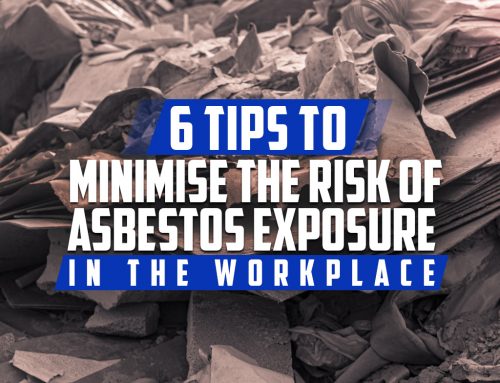Asbestos is all around you – roofs, ceilings, paints, concrete and even in clothes. It is for this reason that the risk of asbestos exposure is truly terrifying particularly when millions of Australians are already suffering from its adverse effects, if not succumbed to asbestos-related diseases.
If you think you have been exposed to asbestos at some point, it is important that you set yourself up for an early diagnosis, whether or not you have symptoms, in order to improve your chances of surviving a potential asbestos-related disease.
In this infographic, we’ll walk you through what you should do next when you’re exposed to asbestos. But, first, we’ll help you understand its dangers.
Exposed to Asbestos
Before it was proven to be a carcinogenic material, asbestos was a primary construction material used predominantly in the 1960s. Although it has been banned in Australia and many other countries, asbestos is still present in many building materials and is still responsible for more than 10,000 deaths in Australia since the early 1980s.
How are you exposed to asbestos?
Inhaling
The primary cause of exposure is inhaling asbestos fibres in the air. If products containing asbestos are disturbed, its fibres are released into the air. When breathed in, the fibres may get trapped in the lungs and over time can lead to serious health problems.
Swallowing
Asbestos can also be detected in water supplies that can contaminate the food and liquids people consume. Its fibres can get in several water sources through soil erosion or corrosion of asbestos pipes.
Where are you most exposed to asbestos?
Exposure to asbestos can happen wherever the fibres of the mineral are present:
- – Home
- – Workplace
- – Renovation Site
- – Public Establishments
Secondary Asbestos Exposure
In addition to these, it is also possible to be exposed to asbestos without being in an environment that is contaminated with it. Some studies suggest that there are people who developed mesothelioma and other related diseases from a person that carries asbestos dust on his clothing.
Asbestos-Related Diseases
Lung Cancer
The risk of lung cancer is greater among workers exposed to asbestos who also smoke.
Mesothelioma
All types of asbestos are linked to this rare form of cancer that often affects the lining of the lungs.
Other Types of Cancer
Some studies also link workplace asbestos exposure to other cancers, including cancers of the larynx, colon, stomach and rectum.
Factors that Heighten the Risk of Developing Asbestos-Related Diseases
- – Dose (the amount of asbestos)
- – Duration (the length of exposure)
- – Source of exposure
- – Type of Asbestos
- – Pre-Existing Lung Disease
- – Smoking
Who is at Most Risk for Asbestos Exposure?
- – Auto Mechanics
- – Carpenters
- – Electricians
- – Insulators
- – Labourers
- – Maintenance Workers
- – Painters
- – Roofers
- – Sheet Metal Workers
- – Welders
What Should You Do?
If you suspect that you have come in contact with asbestos – at home or at work – you should inform your doctor about your possible exposure history and whether you have developed symptoms.
Asbestos Exposure Symptoms
- – Abdominal and chest pain
- – Anaemia
- – Dry coughs
- – Fatigue
- – Fever-like symptoms
- – Loss of appetite
- – Shortness of breath
- – Weight loss
1. Seek Medical Help
Consult a doctor immediately. When it comes to asbestos exposure, the consequences may take years to occur. So, there may be little that can be done at the moment. Nevertheless, you may undergo certain procedures such as:
- – Chest X-Ray
- – Lung Function Tests
- – Lung Biopsy
- – Bronchoscopy
2. Report Asbestos Exposure
As soon as you become aware of the presence of asbestos in the environment, let the authorities or the persons concerned know so that immediate action can be taken to remove the asbestos. The location must be quarantined right away.
3. Contact an Asbestos Removal Company
The next step is to call a company that has years of experience in removing asbestos from the contaminated environment. AWARE has a team of professionals that will inspect your home or business site for asbestos and remove it safely before it leads to grave health problems.
4.Clean up Your Lifestyle
Finally, whether or not you have developed the symptoms of an asbestos-related disease, preemptive measures are in order.
- – Increase intake of fruits and vegetables
- – Pack your plate with anti-cancer foods
- – Berries
- – Broccoli
- – Garlic
- – Leafy Green Vegetables
- – Soy Protein
- – Avoid red meat
- – Quit Smoking
On top of these, you should also schedule regular check-ups with your physician so you can keep track of your health and detect whether you have the symptoms as early as possible.
Did you find this information useful? Let us know by commenting below.






